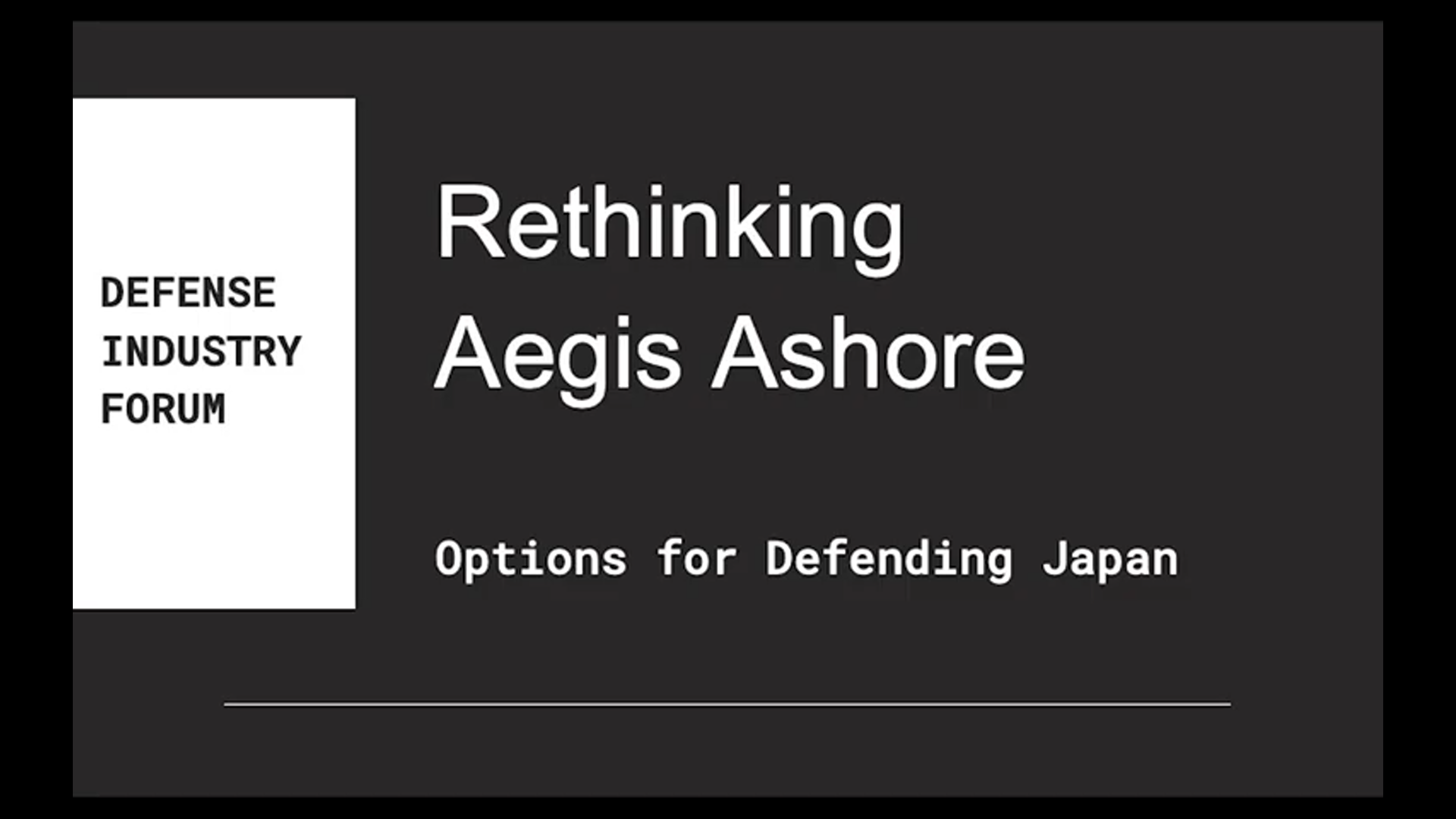2020
August
05
Rethinking Aegis Ashore
Options for Defending Japan
Options for Defending Japan
The dust is settling after a sudden suspension of the Aegis Ashore project in June 2020 by Defense Minister Kono Taro. A number of factors contributed to this decision, including local opposition at launch sites in Yamaguchi and Akita, rising costs and budget restraints, and questions about the systems’ ability to defend against swarm, hypersonic and asymmetric threats.
Other circumstances combine to produce a perfect storm – the first global pandemic in 100 years, China’s expansionism and military buildup, Russia’s foreign adventures and North Korea’s intransigence. All this on the eve of national elections in Japan and the U.S., dissention between the U.S. and some of its allies, negotiations for Host Nation support and concerns about foreign military sales (FMS), diluted international institutions and trade wars.
The Abe administration is reviewing the National Security Strategy on an urgent basis. Japan is reinforcing its alliance with the U.S. and embracing defense cooperation with NATO and ASEAN countries. The Extended Deterrence Dialogue with the U.S. is underway which will consider both defensive and offensive responses in the near and longer term, and perhaps positive changes for Japan within Five Eyes and the Military Technology Control Regime.
A working group on missile defense has been formed under the leadership of Itsunori Onodera, former Minister of Defense, to offer solutions to defend Japan. He is Chairman of the Liberal Democratic Party’s (LDP) Research Commission on Security who will report its findings over the next several months.
First in a series, brought to you by BAE Systems.
August 5, 2020
| Washington | 08:00 |
|---|---|
| London | 13:00 |
| Paris | 14:00 |
| New Delhi | 17:30 |
| Tokyo | 21:00 |
| Canberra | 22:00 |
- No documents available
- No links available











